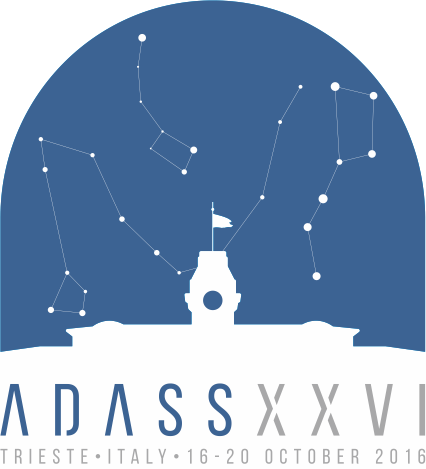Becciani Ugo
Contact

- Position:
- INAF - Osservatorio Astrofisico di Catania, Catania
- Address
- Italy
Miscellaneous Information
- Miscellaneous Information
-
Abstract Reference: 30799
Identifier: P2.4
Presentation: Poster presentation
Key Theme: 2 Management of Scientific and Data Analysis Projects
Visual Analytics in Astrophysics: an integrated tool based on VisIVOAuthors:
Becciani Ugo, Vitello Fabio, Sciacca Eva, Molinari Sergio, Costa AlessandroVisIVO provides an integrated suite of tools and services to visualize meaningfully highly-complex and large-scale datasets. In particular the desktop application handles observational and simulated datasets, especially focusing on multiple dimensions, such as catalogs or computational meshes on local PCs. The data are represented either as points or volumes and can be visualized using advanced rendering algorithms. The VisIVO Desktop has been recently re-designed as a tool for visual analytics in the context of the FP7 VIALACTEA project which aims to exploit the combination of all new-generation surveys of the Galactic Plane to build and deliver a galaxy scale predictive model for star formation of the Milky Way. Usually the essential steps necessary to unveil the inner workings of the galaxy as a star formation engine are often carried out manually, and necessarily over a limited number of galactic sources or very restricted regions. Therefore scientists required new technological solutions able to deal with the growing data size and quantity coming from the available surveys to extract the meaningful informations contained in the data. This resulted in a novel framework based on advanced visual analytics techniques, data mining methodologies, machine learning paradigms and Virtual Observatory (VO) based data representation and retrieval standards. The Visual Analytics environment allows the astronomers to easily conduct research activities using virtual reality methods for multidimensional data and information visualization. It provides real-time data interaction to carry out complex tasks for multi-criteria data/metadata queries on subsamples selection and further analysis, or real-time control of data fitting to theoretical models. It is implemented as a client-server application where all data, models, analysis tools and data-mining/machine-learning pipelines are enclosed in a standardised, homogeneous and interoperable framework. The tool is a cross-platform application, it is implemented in C++ for the core functionalities using Qt for the user interface and the adopted rendering engine is the Visualization Toolkit (VTK). The access to VO-compatible databases and archives is performed using the TAP service and the interoperability with the other VO-based tools (e.g. Aladin, Topcat) is guaranteed thanks to the implementation of the SAMP (Simple Application Messaging Protocol) protocol.



